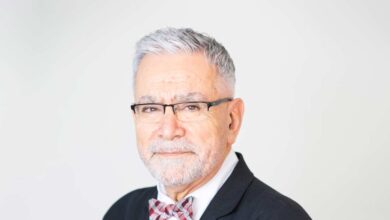Rhinoplasty Between Health and Aesthetic Needs

Dr. Tareq Mahafzah, Consultant ENT, Head of Department at Al-Ahli Hospital/Qatar
Rhinoplasty, or nose reshaping surgery, is a complex yet elegant surgical procedure that sits at the intersection of medicine and art. While often pursued for cosmetic refinement, its therapeutic and health-oriented benefits are equally crucial. At Al-Ahli Hospital, we strive to educate patients that rhinoplasty is not merely an aesthetic choice, it is, for many, a pathway to improved breathing, comfort, and confidence. Dr. Tareq Mahafzah, Consultant ENT and Head of Department, shares his insights into this transformative surgery and how it balances form and function.
The Role of the Nose in Form and Function
The nose is not only central to one’s facial aesthetics but is also a vital organ responsible for warming, humidifying, and filtering inhaled air. Its internal structures contribute to voice resonance, olfactory perception, and respiratory health. A nasal deformity, whether congenital or caused by trauma, can significantly affect these functions. Rhinoplasty, therefore, isn’t simply cosmetic; it may be a necessary intervention to restore optimal breathing or correct structural damage. Dr. Mahafzah explains: “Patients often present with a combination of concerns: a dorsal hump they dislike aesthetically and a deviated septum that hinders their breathing. A good surgeon doesn’t just choose between beauty and function, he integrates both.”
Understanding Patient Motivations
Patients pursue rhinoplasty for various reasons: some seek to harmonize their facial profile, others to alleviate chronic nasal obstruction. Cultural influences, peer feedback, personal insecurities, or post-trauma changes may all shape a patient’s desire for change.
“At Al-Ahli Hospital, we encourage an honest, open conversation,” Dr. Mahafzah says. “We explore the patient’s expectations, assess their nasal anatomy, and determine whether aesthetic reshaping, functional correction, or a combination is required.”
A careful consultation is the cornerstone of a successful rhinoplasty outcome. This includes a complete ENT evaluation, discussion of the patient’s goals, psychological preparedness, and digital imaging to simulate possible outcomes.
Functional Rhinoplasty:
A Medical Necessity
Functional rhinoplasty targets issues like septal deviation, turbinate hypertrophy, nasal valve collapse, and chronic sinusitis. Many patients struggle for years with nasal congestion, snoring, or headaches without realizing the cause is structural. “Rhinoplasty can dramatically improve quality of life,” Dr. Mahafzah states. “Better airflow improves sleep, oxygen saturation, energy levels, and even sports performance. Many patients notice they breathe more easily within days of surgery.” Combining septoplasty (correcting the nasal septum) with rhinoplasty is common. The goal is to preserve or enhance nasal structure while reshaping the external appearance, a delicate but rewarding task.
Aesthetic Rhinoplasty:
Enhancing Confidence
In aesthetic rhinoplasty, patients often want to address concerns such as a prominent hump, bulbous tip, crooked bridge, or asymmetry. However, Dr. Mahafzah warns against a one-size-fits-all mentality.
“Every face is unique,” he says. “We do not apply Western ideals to Middle Eastern faces. Instead, we strive for natural harmony, maintaining ethnic identity while enhancing balance.”
Al-Ahli Hospital employs advanced 3D planning tools and state-of-the-art equipment to ensure precision. This includes closed (endonasal) or open rhinoplasty, depending on the complexity of the case.
The Art and Science of Balance
What makes rhinoplasty different from other procedures is its duality, it’s deeply medical and profoundly artistic. The surgeon must possess an understanding of facial aesthetics, proportion, and harmony, while mastering anatomy and surgical technique.
“No two rhinoplasties are the same,” says Dr. Mahafzah. “You’re not just changing a nose. You’re changing how someone feels about themselves, how they breathe, how they face the world. That’s a huge responsibility.”
Surgeons must also account for the healing process. Swelling may take months to subside. Cartilage memory and scar tissue can influence long-term outcomes. Precision and patience are essential.
Cultural Sensitivity and
Patient Education
In the Middle East, where appearances carry deep social and personal significance, cosmetic surgery must be approached with sensitivity. Education is key. “We guide our patients with honesty,” Dr. Mahafzah adds. “We don’t overpromise. We explain risks, set realistic expectations, and support them during recovery.” At Al-Ahli Hospital, postoperative care includes regular follow-ups, monitoring for complications, and offering emotional support to patients who may experience temporary swelling or bruising.
Outcomes: More Than Skin Deep
Successful rhinoplasty achieves more than just a beautiful nose, it improves self-esteem, breathing, and overall wellness. It is a transformative procedure that blends art, anatomy, and empathy. For Dr. Mahafzah and the ENT team at Al-Ahli Hospital, every surgery is a chance to improve a life, not just a face.
www.ahlihospital.com














